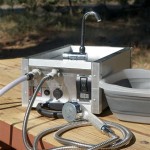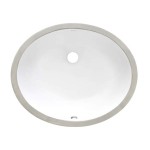Best Touchless Soap Dispenser For Kitchen Sink: A Comprehensive Guide
Maintaining hygiene in the kitchen is paramount, and one crucial element often overlooked is the soap dispenser. Traditional pump dispensers, frequently touched by multiple individuals with potentially contaminated hands, can become breeding grounds for bacteria. Touchless soap dispensers offer a sanitary alternative, minimizing contact and reducing the spread of germs. This article explores the features, benefits, and key considerations for selecting the best touchless soap dispenser for your kitchen sink.
The primary function of a touchless soap dispenser is to dispense soap without requiring physical contact. This is typically achieved through infrared sensor technology. When a hand is placed within the sensor's range, the dispenser automatically releases a pre-determined amount of soap. This functionality is particularly beneficial in high-traffic areas like kitchens, where frequent handwashing is essential.
Beyond hygiene, touchless soap dispensers offer convenience and efficiency. They eliminate the need to manipulate a pump with messy or greasy hands, streamlining the handwashing process. Furthermore, many models offer adjustable soap volume, allowing users to control the amount of soap dispensed, reducing waste and saving money in the long run.
Key Benefits of Touchless Soap Dispensers
The advantages of switching to a touchless soap dispenser extend beyond mere convenience. The health and economic benefits make them a worthwhile investment for any kitchen.
Enhanced Hygiene: The most significant benefit of a touchless soap dispenser is the reduced risk of cross-contamination. By eliminating physical contact, the dispenser prevents the transfer of germs and bacteria from hands to the device and subsequently to other users. This is particularly important in households with multiple occupants or in commercial kitchens where hygiene standards are rigorously enforced.
Improved Accessibility: Touchless dispensers can be more accessible for individuals with mobility limitations or those who have difficulty using traditional pump dispensers. The automatic dispensing mechanism eliminates the need for manual dexterity, making handwashing easier and more inclusive.
Reduced Soap Waste: Many touchless dispensers offer adjustable soap volume settings. This feature allows users to customize the amount of soap dispensed per activation, minimizing waste and preventing excessive soap buildup in the sink. Over time, this can translate into significant cost savings.
Factors to Consider When Choosing a Touchless Soap Dispenser
Selecting the right touchless soap dispenser requires careful consideration of various factors, including capacity, power source, material, and design. By thoroughly evaluating these aspects, you can ensure that the chosen dispenser meets your specific needs and preferences.
Capacity and Soap Type: Touchless soap dispensers are available in various sizes, ranging from small, countertop models to larger, wall-mounted units. Consider the frequency of use and the number of users when determining the appropriate capacity. Also, verify that the dispenser is compatible with your preferred type of soap. Some dispensers are designed specifically for liquid soap, while others can accommodate foam soap or even hand sanitizer. The viscosity of the soap can affect the dispenser's performance, so it's crucial to select a dispenser that is compatible with your chosen soap type.
Power Source: Touchless soap dispensers typically operate on batteries or through an AC adapter. Battery-powered dispensers offer greater flexibility in terms of placement, as they do not require proximity to an electrical outlet. However, the batteries will need to be replaced periodically. AC-powered dispensers offer a more consistent power supply but require access to an outlet. Consider the placement of your dispenser and the availability of power sources when making your decision. Some dispensers offer a hybrid option, allowing them to be powered by either batteries or an AC adapter.
Material and Durability: The material of the dispenser plays a significant role in its durability and aesthetic appeal. Common materials include stainless steel, plastic, and chrome. Stainless steel is known for its durability and resistance to corrosion, making it a popular choice for kitchens. Plastic dispensers are typically more affordable but may be less durable than stainless steel models. Chrome dispensers offer a sleek and modern look but may be prone to fingerprints and smudges. Consider the overall design of your kitchen and your personal preferences when selecting the material.
Sensor Technology and Reliability: The sensor is the heart of a touchless soap dispenser. Its accuracy and responsiveness directly impact the user experience. Look for dispensers that utilize infrared sensor technology with a wide detection range and a fast response time. The sensor should be able to accurately detect the presence of a hand without accidental activations. Some dispensers offer adjustable sensor sensitivity, allowing users to fine-tune the sensor's responsiveness to their specific needs. Reliability is also crucial. Check reviews to see if other users have noted issues with the sensor malfunctioning or failing over time.
Design and Mounting Options: Touchless soap dispensers come in a variety of designs to complement different kitchen styles. Consider the overall aesthetic of your kitchen and choose a dispenser that blends seamlessly with your existing décor. Dispensers can be countertop-mounted, wall-mounted, or integrated into the sink. Countertop models offer easy installation and portability, while wall-mounted models free up counter space and provide a more permanent solution. Integrated dispensers are typically installed during the initial sink installation and offer a clean and streamlined look.
Installation and Maintenance of Touchless Soap Dispensers
Proper installation and regular maintenance are essential for ensuring the longevity and optimal performance of a touchless soap dispenser. Following the manufacturer's instructions carefully during installation is crucial. For battery-powered models, ensure that the batteries are properly inserted and that the battery compartment is securely closed. For AC-powered models, verify that the power cord is properly connected and that the outlet is functioning correctly.
Regular cleaning is necessary to prevent soap buildup and maintain hygiene. Wipe down the dispenser's exterior with a damp cloth regularly. Avoid using abrasive cleaners or scouring pads, as these can damage the finish. Periodically clean the soap dispensing nozzle to prevent clogging. Some dispensers have a removable nozzle that can be easily cleaned with water. If the dispenser is not being used for an extended period, empty the soap reservoir and remove the batteries to prevent leaks and corrosion.
Troubleshooting common issues can also help maintain the dispenser. If the dispenser is not dispensing soap, check the battery level or the AC adapter connection. Ensure that the soap reservoir is not empty and that the soap is not too thick or viscous. Clean the sensor to remove any dirt or debris that may be interfering with its operation. If the dispenser continues to malfunction, consult the manufacturer's troubleshooting guide or contact customer support for assistance.
When choosing a touchless soap dispenser, it is important to remember that not all soaps work optimally in all dispensers. Some soaps may be too thick, causing the dispenser to clog. Others may be too thin, leading to excessive dispensing. Check the manufacturer's recommendations regarding soap types and viscosities. If possible, test a small amount of soap in the dispenser before filling the entire reservoir. This can help prevent issues and ensure that the dispenser functions correctly. Avoid using soaps that contain abrasive particles or exfoliating beads, as these can damage the dispenser's internal mechanisms.
The benefits of using a touchless soap dispenser in the kitchen are numerous. From enhanced hygiene to reduced soap waste, these devices offer a convenient and efficient way to maintain a clean and sanitary environment. By carefully considering the factors outlined in this article, you can select the best touchless soap dispenser for your specific needs and enjoy the many advantages it provides.
The 8 Best Automatic Soap Dispensers For Touchless Handwashing

Best Automatic Soap Dispenser 2024 Tested And Reviewed Epicurious

Best Touchless Soap Dispenser Of 2025 Updated

Best Automatic Soap Dispensers

Best Automatic Soap Dispensers Top Rated Touchless

Best Automatic Soap Dispenser 2024 Tested And Reviewed Epicurious

5 Best Soap Dispensers Of 2025 Reviewed

500ml Touchless Kitchen Sink Liquid Soap Dispenser Bottle Automatic Hand Sensor

Best Automatic Soap Dispenser 2024 Tested And Reviewed Epicurious

High Quality Bathroom Kitchen Sink Tabletop Touchless Soap Dispenser 450ml Wall Mounted Automatic Liquid







